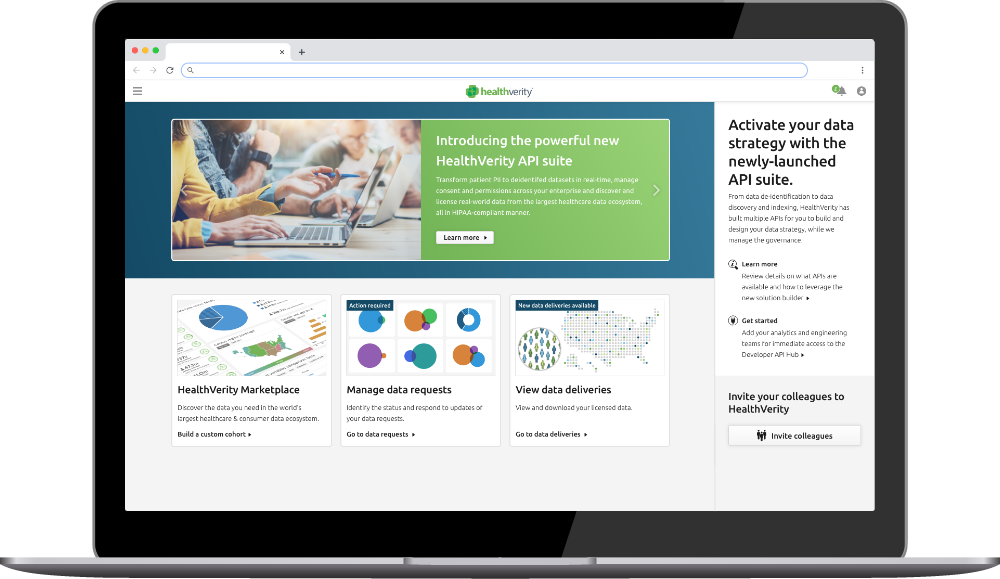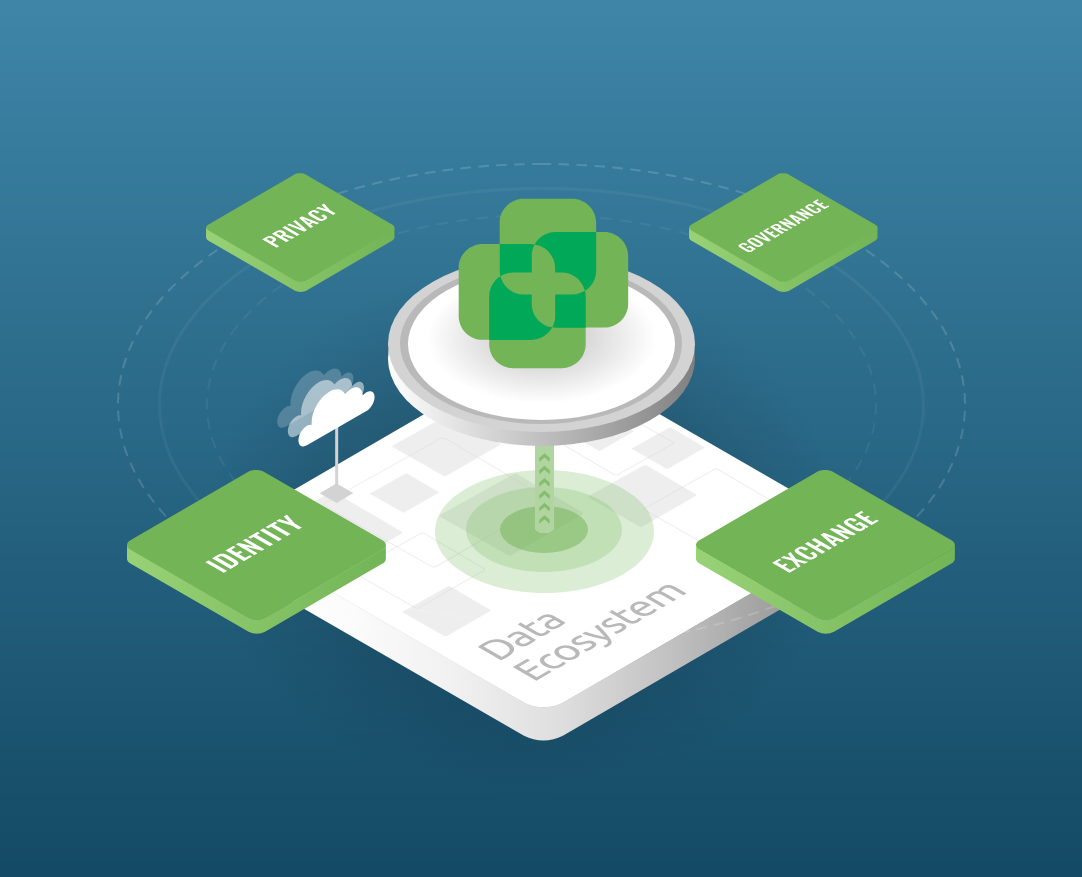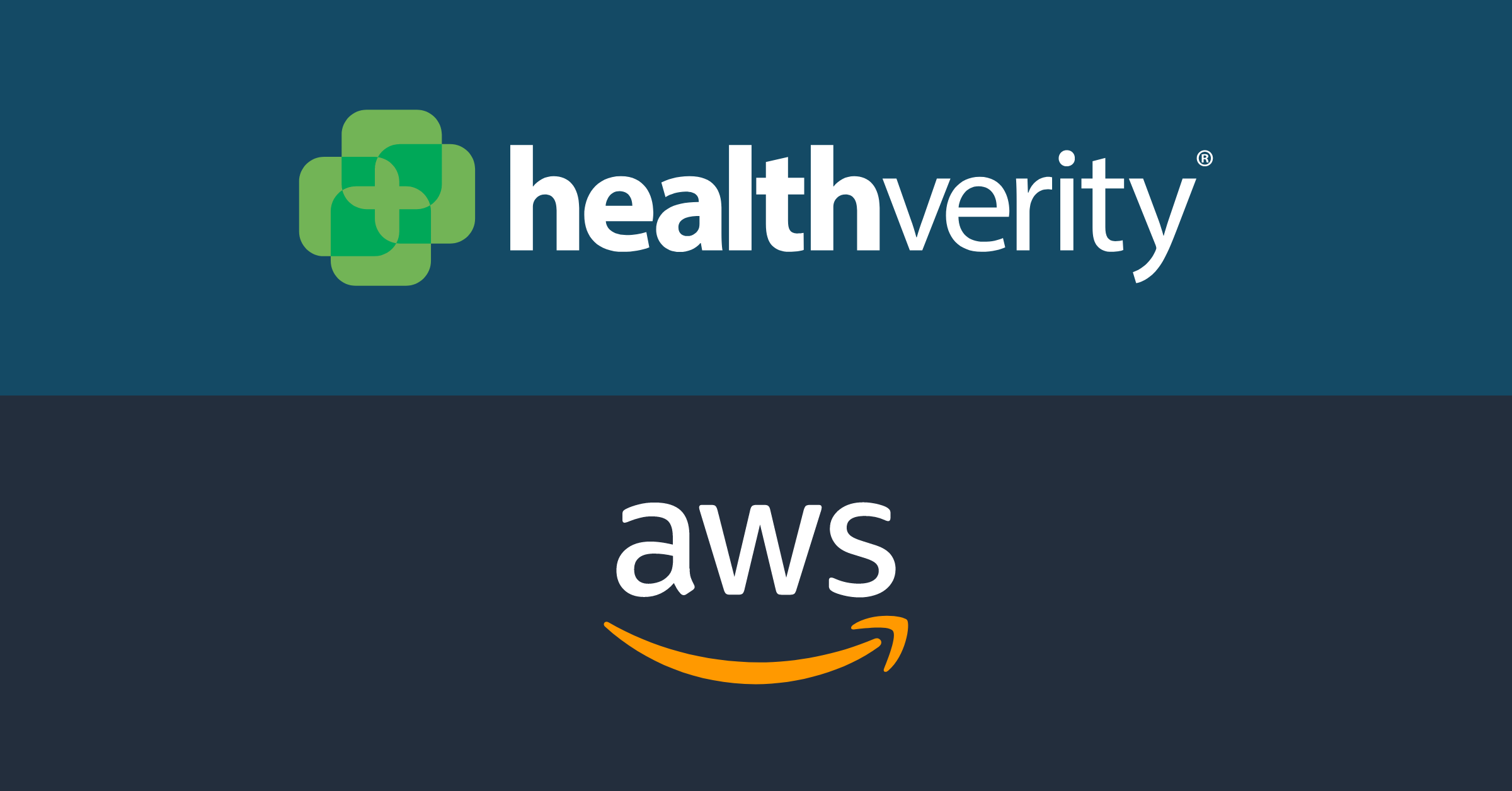This post was originally published on the AWS for Industries blog by Jared Saul, Global Head of Healthcare and Life Sciences Startups at AWS.
Andrew Goldberg, Co-founder and COO of HealthVerity, joins Jared Saul, Global Head of Healthcare and Life Sciences Startups at AWS, for a discussion on industry trends shaping the way payors and pharmaceutical organizations exchange and manage data, the role of real-time data in COVD-19 vaccine development, and a vision for a flexible data strategy. HealthVerity, a partner to leading pharmaceutical manufacturers, payors, and insurance companies, enables the creation and execution of unique end-to-end data strategies with privacy and HIPAA-compliance at the forefront.
This Executive Conversation is one of a series of discussions held with those progressing their industries where we seek to learn more about their discovery, ingenuity, and contributions to healthcare and life sciences.
Jared Saul: What challenges have COVID-19 vaccine manufacturers faced?
Andrew Goldberg: The scariest part of COVID-19 was that there was no history on it—nobody knew how it affected people with underlying conditions, and you couldn’t just leverage data that was six months old because the lag was unacceptable. Today, HealthVerity is a significant data and technology partner to four of the top five COVID-19 vaccine manufacturers in the world. Through HealthVerity technologies, these companies have unprecedented access to real-world data and the ability to bring together medical, pharmacy, lab, and EMR data very quickly at scale. The majority of data within our marketplace is just 24 hours old, so you’re seeing the real-time processing of COVID tests, diagnoses, and all the implications for underlying conditions. In addition to the real-time benefits of the HealthVerity data ecosystem, we also have the ability to manage the governance of bringing that data together (in a HIPAA-compliant manner). Now those companies are starting to experiment with putting that data to work to inform other therapeutics. COVID has definitely changed how many of these companies think about AI, access to untapped real-world data sources, and the speed at which they can consume it—they can do things in parallel instead of sequentially, it’s really powerful.
JS: What trends are you observing around data in the healthcare industry today?
AG: We think the biggest trend affecting the industry has to do with government regulations around data exchange. If you’ve ever been to the hospital or filed a claim, you know how hard it is to get your paperwork back. The government recognizes this challenge and is enforcing greater transparency and ease of access to data. In turn, organizations need to be able to exchange more data efficiently and above all else, securely, to fill in gaps and inform patient outcomes and risks. We’re working toward a free exchange of data between validated, authorized, and authenticated parties, where data is exchanged routinely in a HIPAA-compliant way. Through HealthVerity, our clients can access healthcare and consumer data on more than 330 million US patients from 75 national data providers. Even still, there are so many scenarios where payors or pharma companies encounter data voids.
Think of an insurer writing a new policy for a very large customer. That customer likely won’t share the underlying medical data they have as a self-insured employer. But if the insurer had that information, they’d be able to better assess the customer’s risk and provide better pricing. Through HealthVerity, those parties can exchange data with trust and transparency where both are actually better off.
JS: What are the core data challenges in the life sciences industry?
AG: I think one of the biggest challenges for pharma companies today is the lack of knowledge around what data exists externally to acquire and, even more troubling, what data exists already within their reach but for one reason or another is not useful. First off, if you asked a pharma company if they had enough data, they’d say they have more data than they can manage, but it’s siloed across the organization. They don’t necessarily even know what data is available, and what datasets are able to be linked and made interoperable. Secondly, they don’t have a good sense of what signal they should be able to access, whether that’s data types or other information that would be material to their work. Thirdly, there’s a governance issue. Under HIPAA, these companies can’t just bring datasets together whenever they want because there’s re-identification risk associated with much of the de-identified data being used today. As a result, there’s a fairly rigorous, lengthy, and sometimes very frustrating process to bring data together. And lastly, data does not exist by itself and for itself. In our opinion, it really needs to become part of the workflow of the way pharma and insurance companies go to market. Everybody wants to be a data-driven company, but that means you’re receiving data all the time and it’s built into the way you go to market. Most companies lack the software needed to embed that data as part of their workflows.
JS: Can you share an example of how pharma companies encounter data friction?
AG: Siloed patient data plus a lack of interoperable and HIPAA-compliant data exchange is still a very common issue amongst pharma companies. For example, as the pharma market moves away from retail pharmacy toward specialty drugs, the challenge has become getting patients on to the drug and having them stick to a regimen. Patient hubs have helped, where patients call in to learn about the drug, find help getting on to it, processing paperwork, etc., but all the information gathered in patient hubs generally stays there. And when the pharma company licenses data about its patients on the drug, that patient hub information isn’t included. The company doesn’t know what drug the patient was on beforehand because it’s de-identified, and they don’t know what happened to the patient after they left the data stream—maybe they switched drugs, or passed away, or were cured. You can see how the data is sitting in siloes.
JS: What impact would a comprehensive data ecosystem have on pharma companies?
AG: With HealthVerity, we’re not only using our software to establish unique and persistent identities, which we call HealthVerity IDs (HVIDs), but because we enable the governance part, we understand how to bring together data at the patient hub and the specialty pharmacy. Then we leverage a data ecosystem so pharma companies can see what other drugs the patient is taking, diseases they might have, and what happens after they leave the drug. It’s not a 360 view—because nothing is that complete—but it’s at least 350, which is so far beyond the single stream of knowledge that pharma has today. Pharma companies are missing all that really rich context that’s literally at our fingertips and absolutely crucial to provide and improve patient care. The best part is pharma companies can learn about patients almost on demand. And now they’re only paying for the data they need and they’re getting a signal they never had access to before. This way, the analytics, patient insights, and outcomes are better.
JS: How does HealthVerity satisfy the varying needs of pharma and payors?
AG: For the most part, the nature of what pharma and payors want is the same, but under HIPAA, the implications are very different. HealthVerity enables both scenarios. It’s the same set of core technologies, all running on AWS, so there’s a common architecture. Because several of these are available in real-time, via APIs, it’s much easier for both pharma companies and payors to embed these functionalities directly into their pre-existing workflows. On the one hand, there’s the HealthVerity marketplace, our privacy-protected data ecosystem where clients can discover and license the data. And on the other hand, the set of APIs now allows somebody to have a private view of that data ecosystem living inside their own four walls.

JS: How has building on AWS helped HealthVerity grow as an organization?
AG: We never would’ve been able to build our business if AWS didn’t exist. If you think about the volumes of data we’re dealing with and the workflows we’re establishing, there’s not enough money in the world we could have invested in hardware, servers, and data centers to build out HealthVerity. Implementing an OpEx instead of a CapEx model and having it scale has allowed us to be incredibly efficient with the capital we’ve raised from our investors. Secondly, the breadth of AWS services has enabled us to get smarter, run more efficiently, and discover buying programs at cheaper rates. And because many of our key customers are on AWS, it makes the data exchange aspect really easy.

JS: What new innovations in data and technology excite you?
AG: I think the expansion of social determinants of health and information from new technologies like wearables—combined with real-world data sources—is going to open a whole new level of patient insights. That, plus the speed of exchange. People want things in real time now, so a faxed form is not going to cut it. A business with a real-time operating model has to have access to a real-time data exchange with the acceptable level of governance. HealthVerity solves for both of these, so I am thrilled to be at the cusp of this revolution.




